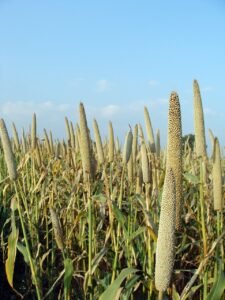Millets, ancient grains with a rich nutritional profile, are witnessing a resurgence in popularity due to their health benefits and sustainability. As the demand for millet-based products grows, so does the need for efficient and specialized machinery to process them. This article provides a comprehensive overview of the best millet machinery and food processing machines, covering their types, functions, and importance in the modern food industry.
Best Millet Machinery
Millet machinery is specifically designed to handle the unique characteristics of millet grains, which differ from wheat and rice in terms of size, shape, and husk composition. These machines are essential for various stages of millet processing, including:
- Dehusking: This involves removing the outer husk from the millet grain. Dehusking machines, such as centrifugal dehullers and rubber roller dehullers, are crucial for separating the edible kernel from the inedible husk. Modern dehusking technologies often incorporate advanced features like optical sorters to improve efficiency and reduce waste.
- Grading and Sorting: Millet grains are graded based on size and quality to ensure consistency in the final product. Grading machines use sieves and air separators to sort the grains into different categories. Advanced grading systems may also employ color sorters to identify and remove defects or foreign materials.
- Polishing: Polishing removes the bran layer from the millet kernel, resulting in a smoother texture. Polishing machines use abrasive materials to gently polish the grains. Modern polishing machines often incorporate vibration technology to improve the polishing process and reduce damage to the grains.
- Cleaning and Aspiration: Millet grains often contain impurities like stones and dirt. Cleaning machines use sieves and air separators to remove these impurities, while aspiration machines use air currents to separate lighter materials from heavier grains. Advanced cleaning and aspiration systems may incorporate magnetic separators to remove metal contaminants and optical sorters to identify and remove foreign materials.
- Packaging: Millet grains are packaged in various sizes and types of containers for distribution and sale. Packaging machines automate the filling, sealing, and labeling of millet products. Modern packaging machines often incorporate advanced features like barcode scanners and weight checkers to ensure accurate packaging and labeling.
Food Processing Machines
In addition to millet-specific machinery, various food processing machines are used in conjunction with millet processing. These include:
- Grinders and Mills: Grinders and mills are used to grind millet grains into flour, which can be used for various applications like baking and cooking. Modern grinders and mills often incorporate advanced features like adjustable particle size control and high-efficiency motors.
- Mixers: Mixers are used to combine millet flour with other ingredients, such as water, eggs, and spices, to create batters and doughs. Modern mixers often incorporate advanced features like variable speed control and planetary mixing action to ensure thorough mixing.
- Cooking Equipment: Cooking equipment, such as ovens, stoves, and fryers, is used to prepare millet-based products like bread, cakes, and snacks. Modern cooking equipment often incorporates advanced features like temperature control and energy efficiency.
- Packaging and Labeling Machines: These machines are used to package and label millet-based products for retail or wholesale distribution. Modern packaging and labeling machines often incorporate advanced features like barcode scanners, weight checkers, and automatic label dispensers.
Importance of Best Millet Machinery and Food Processing Machines
The availability of efficient and reliable millet machinery and food processing machines is crucial for several reasons:
- Increased Production Efficiency: Modern machinery can significantly increase the speed and efficiency of millet processing, allowing for higher production volumes.
- Improved Product Quality: High-quality machinery ensures that millet products are processed consistently, leading to better taste, texture, and nutritional value.
- Cost Reduction: Automation and efficiency can help reduce labor costs and minimize waste, resulting in lower production costs.
- Safety and Hygiene: Modern machinery is designed with safety and hygiene in mind, reducing the risk of contamination and ensuring food safety.
- Market Expansion: The availability of processed millet products can help expand the market for millet and increase consumer awareness of its benefits.
- Sustainability: Efficient millet processing machinery can contribute to sustainable agriculture practices by reducing waste and conserving resources.
As the demand for millet-based products continues to grow, the development and adoption of advanced millet machinery and food processing machines will play a vital role in meeting consumer needs and promoting the sustainable production and consumption of this nutritious grain.
Conclusion
Best Millet machinery and food processing machines are essential tools for the efficient and sustainable production of millet-based products. These machines are designed to handle the unique characteristics of millet grains, ensuring high-quality and consistent results. By investing in modern and best millet machinery, food processors can improve production efficiency, reduce costs, and meet the growing demand for millet products. As consumers continue to seek healthier and more sustainable food options, the importance of the best millet machinery and food processing machines will only increase in the years to come. So Discover the world of best millet machinery and food processing machines. Learn about their types, functions, and importance in the modern food industry. From dehusking and grading to grinding and packaging, this comprehensive guide explores the essential tools for processing millet and creating delicious millet-based products.









